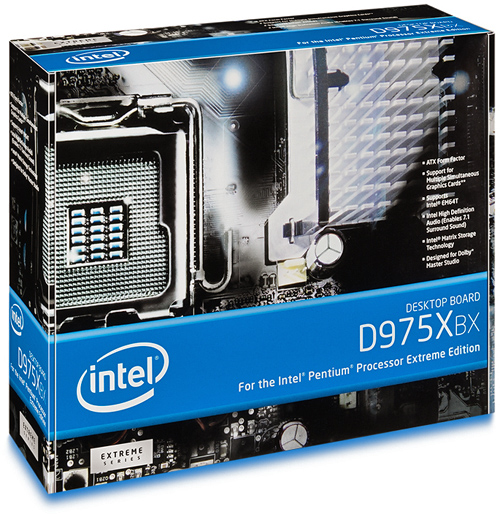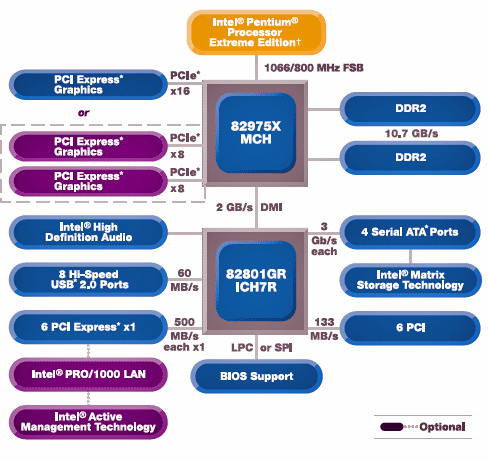Intel D975XBX: Intel brings their Bad-Axe to Market
by Gary Key on January 26, 2006 12:05 AM EST- Posted in
- Motherboards
"Expectation is the root of all heartache."
This quote by noted playwright William Shakespeare expresses our opinion about the Intel D975XBX. Although motherboards from Intel have generally been designed and offered for the business, education, or home office user, they have been directing their efforts towards the enthusiast market recently. In fact, Intel has loosened their white collars and taken off the blue suits with the introduction of the Extreme Series product line last year. Well, that might be an overstatement when compared to other enthusiast product offerings based on Intel chipsets, but Intel does recognize the importance of the gaming and advanced user in the marketplace.

The Intel MPT is enhanced over the 955X iteration to offer improved pipelining to enable a higher utilization of each memory channel, resulting in better performance through increased transfers between the processor and system memory. Intel Flex Memory Technology allows different memory sizes to be populated and still remain in dual-channel mode.
The new architecture also supports both asynchronous and isochronous data traffic, with dedicated internal pipelines and specialized arbitration. In addition, the 975X chipset has improved electricals with optimized ball-out for better latency compared to the 955X chipset. We noticed small, but not significant improvements in our test results.
Intel chose to augment this feature set with additional SATA capabilities via the Silicon Image SiI 3114 chipset, and Firewire 1394a support via the TI TSB43AB23 chipset.
Let's find out if the board met our expectations or left us with heartache.










34 Comments
View All Comments
LoneWolf15 - Thursday, January 26, 2006 - link
"Bad Axe" is also a city in the state of Michigan.http://en.wikipedia.org/wiki/Bad_Axe,_Michigan">http://en.wikipedia.org/wiki/Bad_Axe,_Michigan
fishbits - Thursday, January 26, 2006 - link
That they chose to call this (or anything else) "Bad Axe" will be both the funniest and saddest thing I read all day.JarredWalton - Thursday, January 26, 2006 - link
I think it's a play off of "Bad Ass" - say it fast and "axe" sounds a lot like "ass" to me. Basically, it was a codename from Intel designed to sound cool. Love it or hate it, that's what they used. Intel has geeks working there too, it seems! :)BATCH71 - Thursday, January 26, 2006 - link
I really wanted this board to be a SLI-screamer. I guess that is not the case. Next processor will be an AMD.